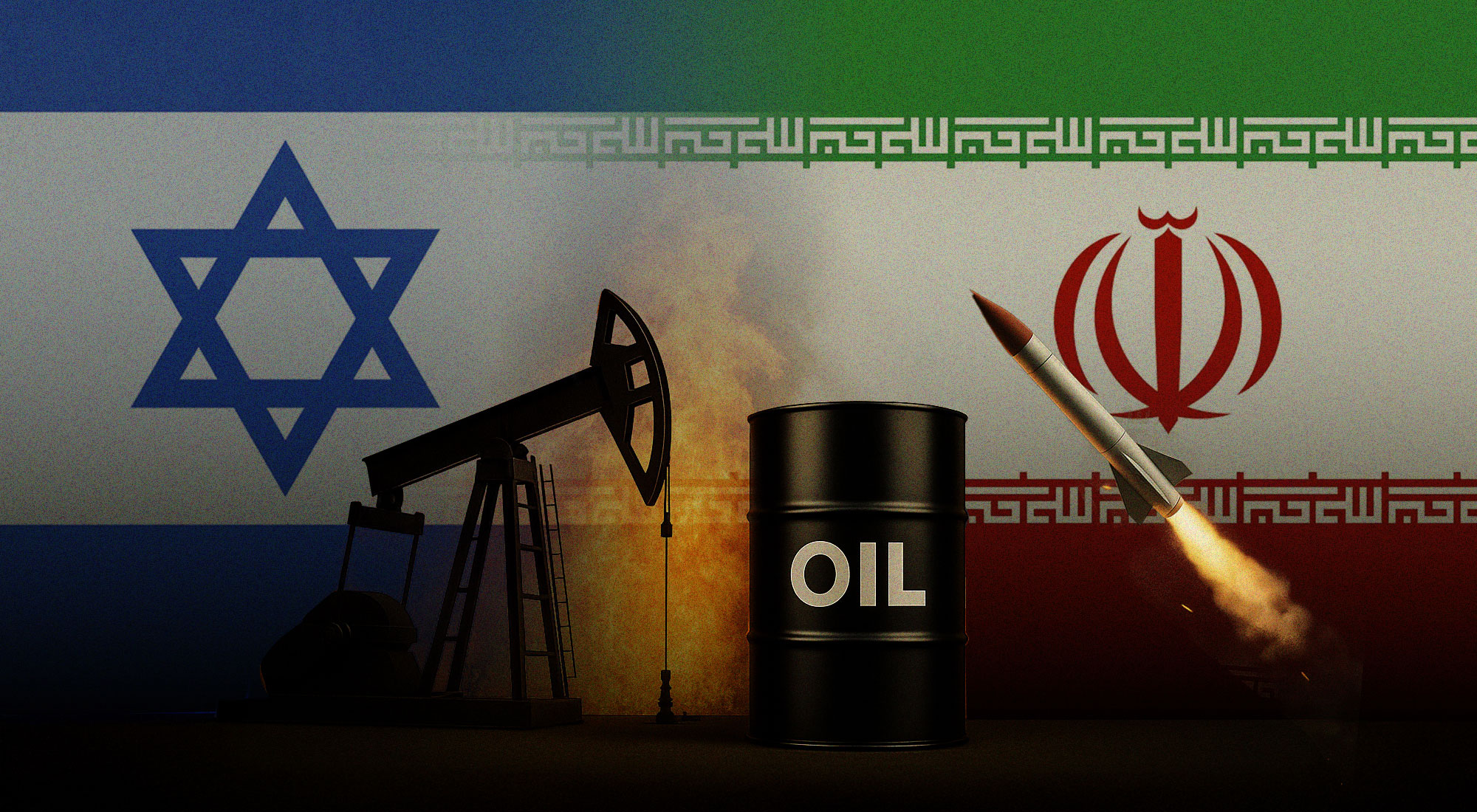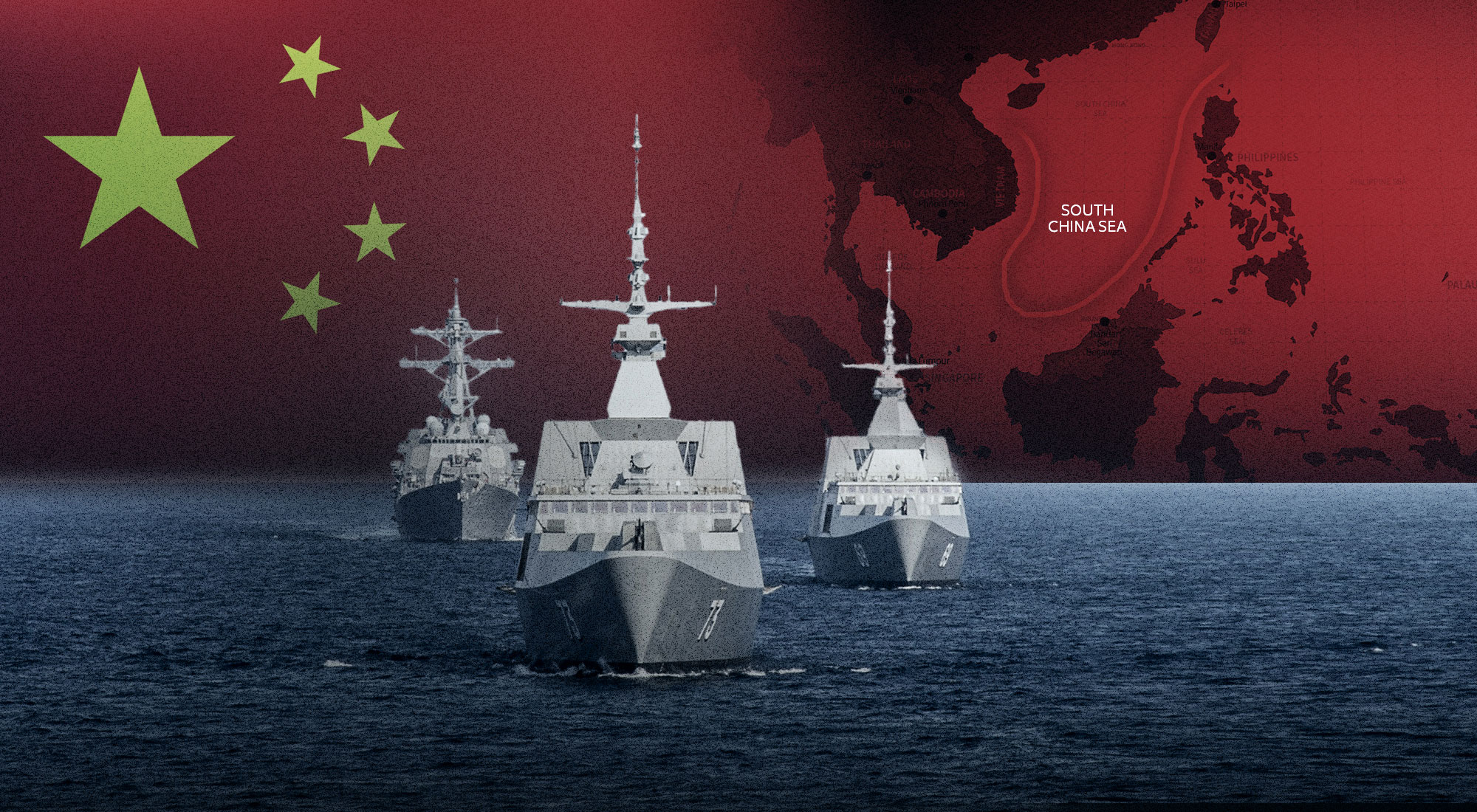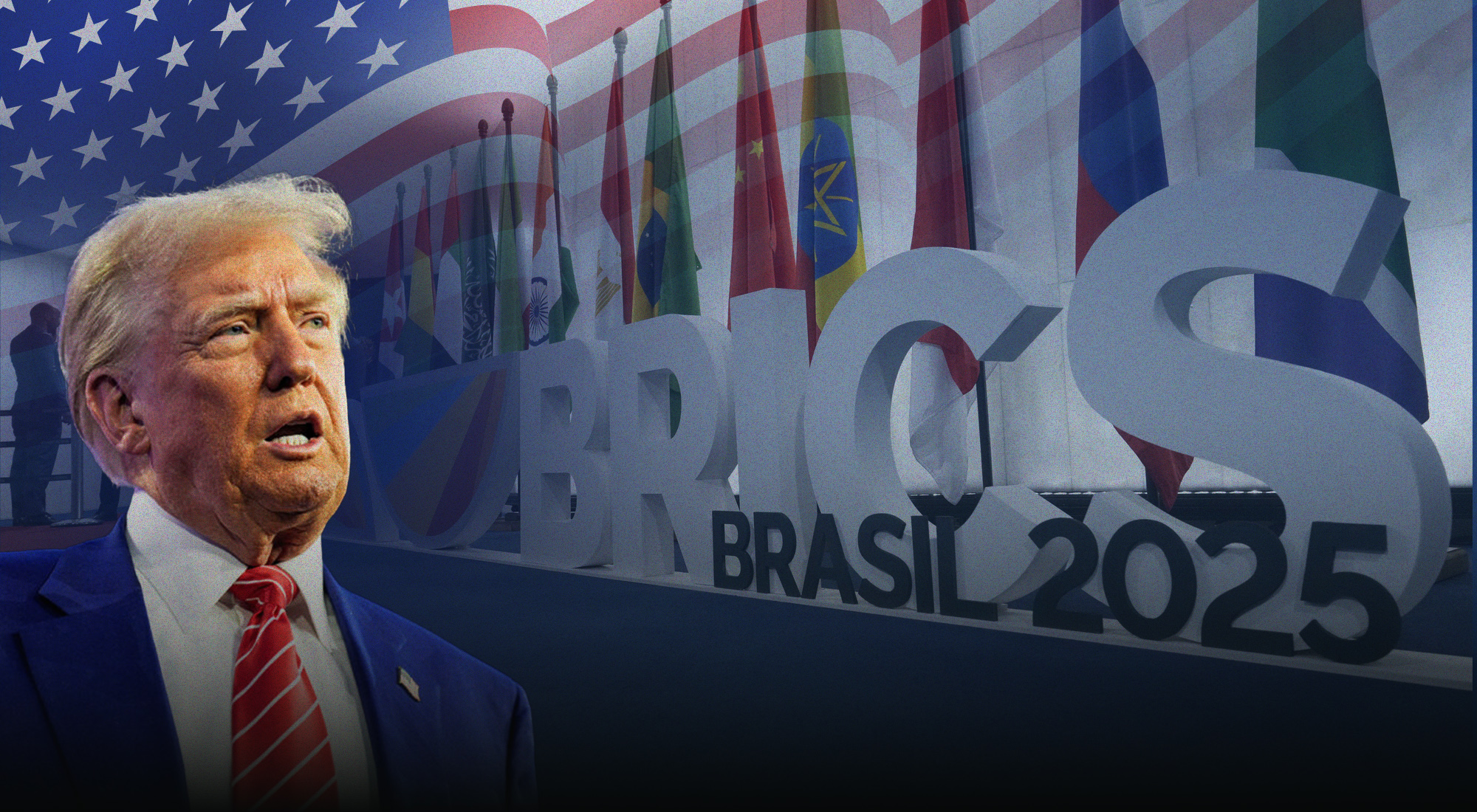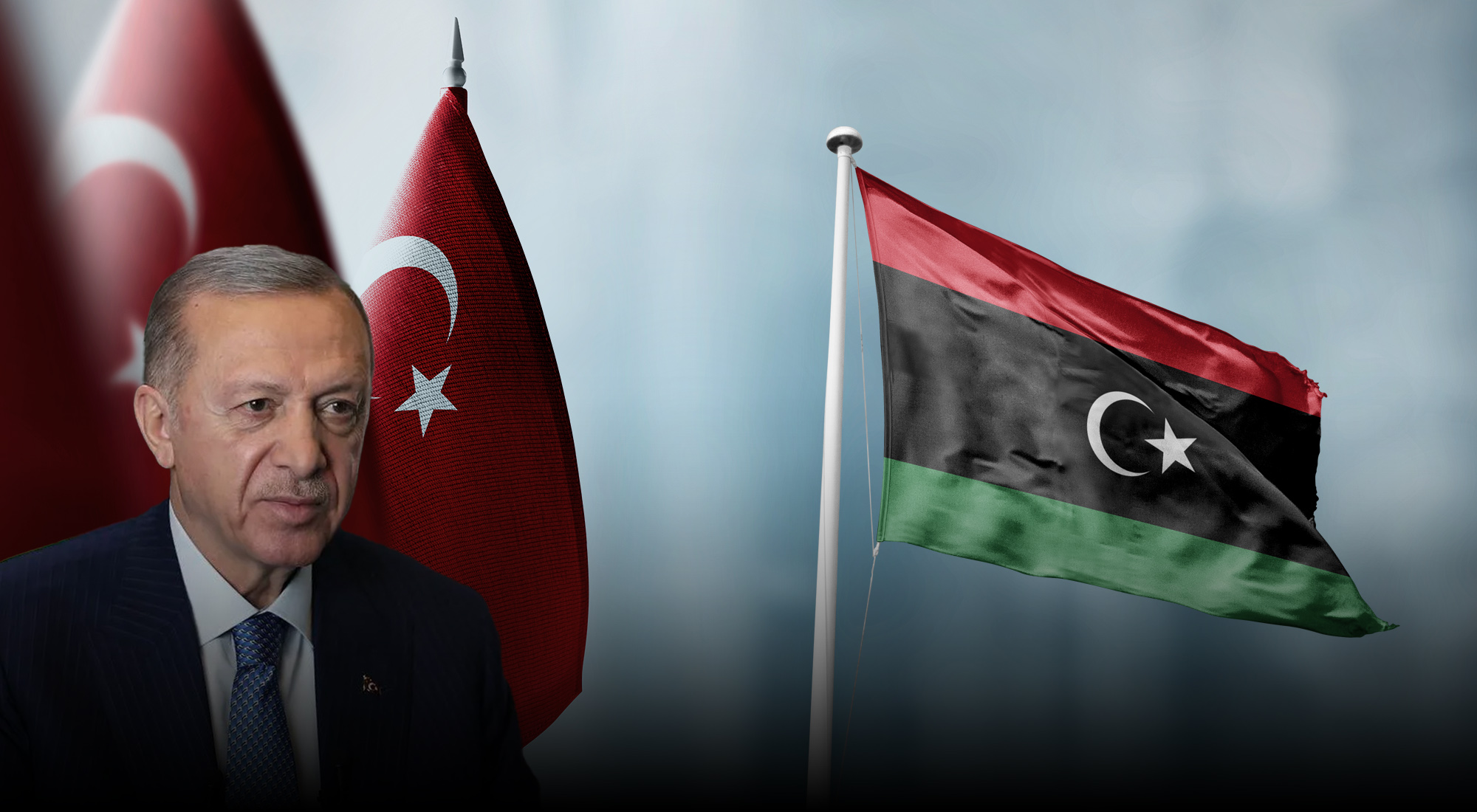The longstanding tension between Iran and Israel has escalated into a volatile conflict in the Middle East, characterized by proxy warfare and direct military engagements. At the heart of this confrontation lies the issue of Iran’s nuclear program, which Israel perceives as an existential threat. Iran, for its part, maintains that its nuclear ambitions are strictly for peaceful, civilian purposes. This fundamental disagreement has fueled a cycle of mistrust and armed retaliation.
In mid-June 2025, the conflict heightened in intensity. Israel launched Operation Rising Lion,[1] striking over 100 military and nuclear-related targets across Iranian territory. Within hours, Iran responded with a wave of ballistic missile and drone attacks, launching Operation True Promise 3, which targeted key locations in Israel. The exchange marked one of the most direct confrontations between the two nations to date. The situation quickly escalated further with the involvement of the United States, which conducted coordinated airstrikes on three key Iranian nuclear facilities.[2] These strikes resulted in widespread damage and the deaths of several high-ranking Iranian officials, amplifying regional instability.
Beyond the immediate military implications, the conflict has broader geopolitical consequences, particularly for critical maritime routes such as the Strait of Hormuz. As a vital chokepoint through which nearly one-fifth of the world’s oil supply passes, any disruption in the strait has the potential to trigger global economic repercussions. Iran’s threats to block the strait in response to Western aggression have only heightened concerns about energy security and international trade.
This paper examines the recent escalation of the Iran-Israel conflict, focusing on its historical roots, regional impact, and global consequences. It highlights the strategic role of the Strait of Hormuz, the implications of U.S. involvement, and potential regime change scenarios in Iran. The aim is to assess how these developments may shift the geopolitical balance in the Middle East.
1) The Iran-Israel Conflict: Origins and Escalation
Before the 1979 Iranian Revolution, Iran and Israel maintained relatively cordial relations. Under Shah Mohammad Reza Pahlavi, Iran recognized Israel de facto, collaborated on intelligence and trade, and shared concerns about rising Arab nationalism.[3] This changed dramatically with the rise of Ayatollah Khomeini, whose theocratic regime adopted a staunchly anti-Zionist stance. Iran severed ties with Israel, declared it illegitimate, and aligned itself with the Palestinian cause.
Soon after, Iran began providing financial and military support to militant groups opposed to Israel. Its first major proxy relationship emerged following Israel’s 1982 invasion of Lebanon when Iran established and armed Hezbollah, a Shiite militia that remains its most influential regional proxy.[4] In the following decades, Iran extended its support to Hamas and Palestinian Islamic Jihad, offering weapons, funding, and training. Israel, in parallel, deepened its ties with Gulf Arab states wary of Iranian regional ambitions.[5]
Today, Iran’s proxy network spans Lebanon, Syria, Gaza, and Yemen. In Lebanon, Hezbollah operates as both a political party and a powerful militia, posing a direct threat to Israel’s northern border.[6] In Syria, Iranian forces and aligned militias backed the Assad regime while also building logistics corridors to arm Hezbollah.[7] In Gaza, Iranian support enables Hamas and Islamic Jihad to launch attacks on Israel, reinforcing Iran’s strategy of deterrence through indirect confrontation. In Yemen, Iran has cultivated a durable partnership with the Houthi movement, transforming it into a strategic proxy capable of challenging regional rivals and disrupting maritime security in the Red Sea.[8]
In the 2000s, the conflict evolved as Israel intensified efforts to prevent Iran from developing nuclear weapons. This gave rise to a sustained shadow war, involving sabotage operations, cyberattacks, and targeted assassinations of nuclear scientists.
Tensions escalated again in October 2023, when a Hamas-led attack on Israel sparked a war in Gaza. Violence soon spread across the region, including rocket fire from Lebanon, drone strikes in Syria and Iraq, Israeli strikes against Houthi positions in Yemen, and mobilization of pro-Iranian militias. In June 2025, Israel launched a major air campaign against Iranian nuclear and military sites, targeted residential buildings, news stations and prisons. Iran swiftly retaliated with missile and drone strikes targeting Israeli cities.
The crisis reached a critical turning point when the United States directly entered the conflict, launching targeted airstrikes on Iran’s Isfahan, Fordow and Natanz nuclear facilities. This escalation marked a significant shift in the strategic posture of the conflict, signaling Washington’s alignment with Israel’s long-standing objective of dismantling Iran’s nuclear infrastructure. In official statements, President Trump described the operation as a “spectacular success” and declared that the United States “will not stop until Iran’s nuclear capability is dismantled for good.”[9] These remarks underscored a broader ambition to not only delay but potentially degrade the Islamic Republic’s strategic resilience.
In Tehran, the strikes were denounced as a clear violation of sovereignty and an act of war. Iranian officials characterized the attacks as an existential challenge to the state and rejected growing international pressure for diplomatic de-escalation. Framing the moment as one of national survival, Tehran asserted that “as long as the aggression and attacks continue, there is simply no room for talk of dialogue or diplomacy.”[10] The refusal to engage in talks under fire reflects a long-standing Iranian position that meaningful diplomacy cannot take place under coercion. Instead, Iran responded with a series of countermeasures, including the threat to close the Strait of Hormuz, a vital maritime chokepoint through which nearly one-fifth of global oil exports pass.[11] While the strait remains open, the mere articulation of this threat has already produced ripples across global markets and raised alarms over the potential militarization of one of the world’s most critical energy corridors.[12] Together, these ideological divides, proxy entanglements, and military escalations have entrenched the Iran-Israel rivalry into a multidimensional conflict with regional and global implications.
2) The Strait of Hormuz: A Strategic Chokepoint
The Strait of Hormuz, situated between Oman and Iran, is one of the most critical maritime chokepoints in the world. It connects the Arabian Gulf with the Gulf of Oman and the Arabian Sea and is deep and wide enough to accommodate the largest oil tankers globally. Its strategic value stems from the volume of oil and liquefied natural gas (LNG) that passes through it: in 2024, approximately 20 million barrels per day (b/d) of crude oil transited the strait, accounting for roughly 20 percent of global petroleum liquids consumption. In the first quarter of 2025, these volumes remained relatively stable, underlining the strait’s continued importance in global energy flows.
Despite persistent geopolitical tensions in the region, maritime traffic through the strait has not yet been physically blocked. However, markets remain highly sensitive to perceived risks. For example, in June 2025, Brent crude oil prices increased from US$69 to US$74 per barrel within 24 hours in response to heightened regional tensions, underscoring the strait’s role as a barometer for energy market stability.
The Strait of Hormuz is particularly significant because there are few practical alternatives for routing oil exports out of the Arabian Gulf. While Saudi Arabia and the United Arab Emirates (UAE) have invested in bypass infrastructure such as Saudi Aramco’s East-West Pipeline to the Red Sea and the UAE’s Fujairah pipeline to the Gulf of Oman, these routes operate near capacity. For instance, only 2.6 million b/d of additional capacity might be available to offset disruptions.
Iran has attempted to reduce its own dependency on the strait by inaugurating the Goreh-Jask pipeline in 2021, connecting oilfields to the port of Jask on the Gulf of Oman. However, in 2024, the pipeline was underutilized, with exports falling below 70,000 b/d and suspending operations after September (EIA, 2025). These constraints suggest that even temporary blockages of the Strait of Hormuz could lead to substantial delays, increased shipping costs and a rise in global energy prices.
In terms of geopolitical exposure, Asian economies are the most vulnerable. In 2024, 84 percent of the crude oil and condensate and 83 percent of LNG transiting the Strait of Hormuz were destined for Asian markets. China, India, Japan and South Korea collectively accounted for 69 percent of Hormuz oil flows, highlighting the strategic stakes for these countries in maintaining open sea lanes through the strait.
In sum, the Strait of Hormuz remains not only a vital artery for global energy trade but also a geopolitical flashpoint. Any disruption, whether real or perceived, can ripple across international markets and amplify existing tensions between global powers.[13]
2.1) How would global oil markets react if Iran attempted to close the Strait of Hormuz?
Though Iran has no legal authority to close the strait, it may resort to tactics such as harassing vessels, launching drones or missiles, or mining the waters, creating high-risk conditions for commercial shipping. These tactics echo the Houthi disruptions in the Red Sea, which have already forced ships to reroute around Africa, increasing costs and delays.
Historically, Iran has not fully closed the strait, but it has used maritime seizures and harassment to assert political leverage, especially during sanctions or regional tensions. For example, Iranian forces have previously seized vessels linked to Israel, the U.S., the UK, and Greece under contested legal pretexts. A full blockade would not only provoke military retaliation, especially from the U.S. Fifth Fleet and Western naval coalitions, but would also hurt Iran’s own economy, as it depends on Hormuz to export oil, mainly to China—its largest buyer and key diplomatic ally.
While some Gulf states like Saudi Arabia and the UAE have limited pipeline capacity to bypass the strait, Iraq, Kuwait, Qatar and Bahrain remain entirely dependent on it. Most oil flowing through the strait is bound for Asian markets, making regional economies especially vulnerable to any disruption.[14]
A ceasefire deal between Iran and Israel, while critical to de-escalating regional tensions, is likely to be shaped by strategic bargaining, particularly around the Strait of Hormuz, which Iran may use as a leverage point in negotiations. As one of the world’s most vital energy chokepoints, the strait handles a significant share of global oil and gas exports. Iran’s ability to disrupt or threaten shipping through Hormuz gives it geopolitical weight, especially when its economy is under sanctions and military pressure. By leveraging control over the strait, Iran can pressure Western and regional actors to accept more favorable ceasefire terms, reduce sanctions, or ease diplomatic isolation. However, prolonged use of this tactic risks alienating key partners like China, heavily reliant on Gulf energy and could provoke direct military responses from the U.S. Navy and its allies, who view freedom of navigation as a red line. Therefore, while Hormuz serves as a powerful bargaining chip, its use in ceasefire negotiations carries high strategic and economic stakes for Iran and the broader international community.
3) Stakes for the Gulf: Will the Iran-Israel Conflict Deter Gulf Investment?
From an economic perspective, Foreign direct investment (FDI) in the Gulf region may decline in the second half of 2025 due to heightened geopolitical tensions between Iran and Israel, according to Safaa El-Kogali, the World Bank’s country director for the Gulf region. Investors are likely to adopt a cautious, “wait-and-see” approach as regional uncertainty grows following the United States’ direct military strikes on Iranian nuclear sites on 22 June. While FDI levels vary across the GCC, the UAE saw significant growth in 2024, attracting $45.5 billion (a 48% increase), while Saudi Arabia, Bahrain, Kuwait and Qatar experienced declines. Oman was the exception, with FDI rising due to sound fiscal management and diversification.
El-Kogali stressed that the full economic impact of the conflict is difficult to measure but warned that rising commodity and shipping costs, as well as inflation, will affect multiple sectors. The region’s travel and tourism sector, contributing over 11% to GDP, may also suffer as tourists avoid unstable areas. Oil prices, which surged up to 13% at the onset of the war, could benefit Gulf budgets if managed wisely. However, El-Kogali emphasized that economic resilience depends on diversification. Countries like the UAE, with 74% of GDP from non-oil sectors, are better positioned to withstand external shocks.
The World Bank encourages Gulf nations to channel oil revenues into high-impact, job-creating sectors to sustain long-term growth. While the region has historically responded well to crises through fiscal policy, El-Kogali cautioned that more targeted and efficient investment is needed to manage ongoing geoeconomic risks.[15]
4) Potential Scenarios for the Conflict and Stakeholder Impact
Possible Regime Change Scenarios
Although a ceasefire is currently in place, the core drivers of the Iran-Israel conflict—namely Iran’s pursuit of nuclear capabilities and Israel’s commitment to preventing them—remain unresolved, suggesting that the conflict is likely to persist or re-emerge in new forms. The potential assassination of Supreme Leader Ali Khamenei would mark a critical turning point in Iran’s political trajectory, triggering far-reaching consequences both domestically and across the Middle East. The immediate aftermath would likely be defined by political upheaval and institutional fragility, intensifying Iran’s already fragile legitimacy crisis, the regime’s post-Khamenei succession plan, and potentially sparking widespread civil unrest. Competing factions within the political and religious elite, particularly hardline elements, would likely seize the opportunity to consolidate power, leading to a chaotic and contested succession process. The Islamic Revolutionary Guard Corps (IRGC) could face internal divisions, further exacerbating the uncertainty. Global markets, especially in the energy sector, would likely respond with volatility, anticipating potential disruptions to oil and gas flows from the region.
Two overarching scenarios emerge following such an event. In the first, the regime maintains cohesion and manages a controlled transition of power, possibly appointing a hardliner like Mojtaba Khamenei, the Supreme Leader’s son. This would likely usher in an era of increased authoritarianism, tighter domestic control, and a more aggressive regional posture, particularly through Iran’s proxy network. While the structure of the Islamic Republic would remain intact, the regime would become more securitized, seeking to restore internal order and international deterrence through force.
In contrast, the second scenario envisions the collapse of regime authority, plunging Iran into a prolonged period of internal chaos. Without a clear and legitimate successor, the power vacuum could resemble the post-2003 instability in Iraq, with rival factions, including elements within the IRGC, competing for dominance. Such a breakdown could lead to regional spillover, rogue military actions, and an opening for systemic transformation in Iran’s political order. This trajectory would present a highly volatile and unpredictable environment, with significant implications for regional security, global energy markets, and the geopolitical balance in the Middle East. Whether through continuity or collapse, if an assassination of Iran’s Supreme Leader were to occur, it would represent the end of an era and the beginning of a turbulent and uncertain chapter in the region’s history.[16]
Diplomatic and Military Scenarios
The Iran-Israel conflict entered a fragile pause with the announcement of a U.S.-brokered, phased ceasefire on 23 June 2025. President Trump revealed the plan on his Truth Social platform, explaining that the ceasefire would start at 12:00 a.m. ET with a 12-hour halt by Iran, followed by a 12-hour halt by Israel, after which a formal end to hostilities would be declared.[17] This phased approach allowed each side to conclude “military missions that are in progress” and ensured that during each window, the opposing side remained “peaceful and respectful.”1 Israel publicly affirmed the agreement, declaring that it had achieved its strategic goals, while Iran offered only conditional compliance, warning that its restraint depended on Israel halting aggressive operations.[18] This situation has created an “uneasy restraint”, relying on mutual deterrence and external oversight.
Moreover, Iran targeted the U.S. Al Udeid Air Base in Qatar, launching 14 ballistic missiles, 13 of which were intercepted on the 23rd of June. The attack, reportedly signaled in advance, was largely symbolic in nature, intended to showcase Iran’s regional reach without triggering widespread conflict.[19] Concurrently, Iranian officials renewed their warnings about closing the Strait of Hormuz, which briefly disrupted oil markets and highlighted Iran’s capacity to leverage economic chokepoints as strategic pressure points.[20]
Sustaining this delicate status quo will depend on continued mediation and a robust military presence. The United States has taken the lead in enforcing the ceasefire, leveraging its diplomatic influence and military capabilities. Qatar has played a subtler, yet vital role facilitating communications between Iran, the U.S., and Israel to reinforce compliance.[21] Militarily, the U.S. Navy’s Fifth Fleet, based in Bahrain, along with the Al Udeid Air Base, serve as essential deterrents; assets were even repositioned in response to escalation fears.[22] Iran’s IRGC and affiliated proxy groups across Lebanon, Syria, Gaza, and Iraq have held back from large-scale operations since the assassinations carried out last week by Israel.[23] Meanwhile, Yemen’s Iran-aligned Houthi rebels have continued missile and drone attacks targeting Israel and global shipping in the Red Sea.[24] While the Israeli Defense Forces remain mobilized, ready to resume actions if the ceasefire fails. Together, these overlapping efforts like the phased ceasefire, regional mediation, and sustained military posturing, have temporarily contained the conflict. What sustains this equilibrium is not peacebuilding but strategic caution, risk aversion, and diplomatic pressure. Its endurance depends on avoiding miscalculations that could unravel the ceasefire and reignite hostilities beyond manageable thresholds.
Conclusion
The Iran-Israel conflict has evolved into a multidimensional crisis that intersects military confrontation, ideological rivalry, regional security and global economic interests. What began as a dispute over Iran’s nuclear program has expanded into a broader geopolitical struggle involving proxy warfare, direct military engagement, and strategic pressure points such as the Strait of Hormuz. As this chokepoint remains a critical passage for global energy supplies, its potential closure or disruption carries immediate and far-reaching implications for markets and maritime security, particularly for energy-dependent economies in Asia.
The involvement of global powers, most notably the United States, has further complicated efforts at de-escalation and highlighted the shifting dynamics of international alignment. The fragile ceasefire now in place reflects a momentary pause rather than a resolution, as mutual distrust and competing interests persist. The future of the region hinges on whether strategic restraint and diplomacy can prevail over maximalist agendas and reactive militarism. As Iran navigates domestic uncertainty and international isolation, and as Israel pursues its security imperatives, the risk of escalation remains high. For Gulf states and the broader international community, the crisis underscores the urgency of investing in regional stability, diversifying energy routes, and preparing for a more unpredictable global order.
Given the high stakes, the durability of the ceasefire will depend on sustained diplomacy, mutual deterrence, and the containment of proxy actors. However, due to the deep-seated distrust between Iran and Israel and the broader instability in the region, it remains difficult to predict whether this fragile pause will hold or what the next phase of this volatile confrontation might bring.
[1] Dolzikova, Darya and Matthew Savill, “Operation Rising Lion: The First 72 Hours,” Rusi.org, 2025, https://www.rusi.org/explore-our-research/publications/commentary/operation-rising-lion-first-72-hours.
[2] “Midnight Hammer to Rising Lion, List of Major Military Operations in Middle East,” NDTV, June 23, 2025, https://www.ndtv.com/world-news/midnight-hammer-to-rising-lion-list-of-major-military-operations-in-middle-east-amid-iran-israel-conflict-8736591.
[3] Nejad, Rana. 2025. “Iran and Israel’s Covert Pragmatic Friendship,” New Lines Magazine, January 29, 2025, https://newlinesmag.com/argument/iran-and-israels-covert-pragmatic-friendship/.
[4] Ayad, Christophe, “Hezbollah’s Four Decades of War with Israel,” Le Monde, October 2024, https://www.lemonde.fr/en/international/article/2024/10/01/hezbollah-s-four-decades-of-war-with-israel_6727883_4.html.
[5] Skare, Erik, “Iran, Hamas, and Islamic Jihad: A Marriage of Convenience,” European Council on Foreign Relations, 2023, https://ecfr.eu/article/iran-hamas-and-islamic-jihad-a-marriage-of-convenience/.
[6] CHEHAYEB, KAREEM, “How Lebanon’s Hezbollah Group Became a Critical Player in the Israel-Hamas War,” AP News, November 7, 2023. https://apnews.com/article/hezbollah-israel-hamas-war-lebanon-iran-493e9290bc796fd90a9220bab229cd37.
[7] Filkins, Dexter. “After Syria,” The New Yorker, February 18, 2013, https://www.newyorker.com/magazine/2013/02/25/after-syria?.
[8] Congressional Research Service, “Iran: Background and U.S. Policy,” 2022, https://www.everycrsreport.com/files/2022-11-30_R47321_b1fd7f78e3c8341ecd6eafebeb70f10001cd7b0c.pdf?.
[9] Cornwell, Alexander, and James Oliphant, “Iran, Israel Launch New Attacks after Tehran Rules out Nuclear Talks,” Reuters, June 21, 2025, https://www.reuters.com/world/middle-east/iran-israel-launch-new-attacks-after-tehran-rules-out-nuclear-talks-2025-06-21/.
[10] Reuters Videos, “Iran’s Foreign Minister Says No to Negotiations While under Attack,” Yahoo News, June 20, 2025. https://www.yahoo.com/news/irans-foreign-minister-says-no-104937990.html.
[11] “Four Questions (and Expert Answers) about Iran’s Threats to Close the Strait of Hormuz,” Atlantic Council, June 23, 2025, https://www.atlanticcouncil.org/blogs/new-atlanticist/four-questions-and-expert-answers-about-irans-threats-to-close-the-strait-of-hormuz.
[12] Hurley, James, Emily Gosden, and Tom Saunders, “Oil Majors Fear Threat of Iran Blocking Strait of Hormuz,” The Times, June 23, 2025, https://www.thetimes.com/business-money/economics/article/oil-majors-fear-threat-of-iran-blocking-strait-of-hormuz-pbhl25hls?.
[13] Barden, Justine, and Candace Dunn, “Amid Regional Conflict, the Strait of Hormuz Remains Critical Oil Chokepoint – U.S. Energy Information Administration (EIA),” EIA, 2024, https://www.eia.gov/todayinenergy/detail.php?id=65504.
[14] Lee, Julian, “What Happens to Global Oil If Iran Tries to Close Strait of Hormuz?,” Australian Financial Review, June 23, 2025, https://www.afr.com/world/middle-east/what-happens-to-global-oil-if-iran-tries-to-close-strait-of-hormuz-20250623-p5m9ob.
[15] A. Essaid, Salim, “Spillover from Israel-Iran war could slow Gulf investment inflow in 2025, warns World Bank GCC director,” The National, June 22, 2025, https://www.thenationalnews.com/business/economy/2025/06/22/israel-iran-war-could-slow-gulf-investment-inflow-in-2025-warns-world-bank-regional-chief/#:~:text=Investors%20likely%20to%20adopt%20a,region%2C%20Safaa%20El%2DKogali%20says&text=Foreign%20direct%20investment%20in%20the,s%20GCC%20countries%20director%20said.
[16] TRENDS Knowledge, TRENDS Research & Advisory.
[17] Livingstone, Helen, Jane Clinton, Daniel Lavelle, Dan Sabbagh, Rebecca Ratcliffe, Jennifer Rankin, Lisa O’Carroll, et al., “Israel-Iran War Live: Israel Strikes Iran’s Fordow Nuclear Site and Targets in Tehran,” The Guardian, June 23, 2025. https://www.theguardian.com/world/live/2025/jun/23/israel-iran-war-live-updates-us-trump-regime-change-middle-east-gaza-latest-news.
[18] “Netanyahu Says Israel Has Agreed to Trump’s Proposal for Ceasefire with Iran,” Reuters, June 24, 2025, https://www.reuters.com/world/middle-east/netanyahu-says-israel-has-agreed-trumps-proposal-ceasefire-with-iran-2025-06-24/.
[19] Seddon, Sean , and Gabriela Pomeroy, “What We Know about Iran’s Attack on US Base in Qatar,” BBC, June 23, 2025, https://www.bbc.com/news/articles/cdjxdgjpd48o.
[20] Uberti, David, and Costas Paris, “The Strait of Hormuz: The 6 Miles of Water Keeping Global Markets on Edge,” The Wall Street Journal, June 22, 2025, https://www.wsj.com/world/middle-east/strait-hormuz-oil-markets-0d046c6b.
[21] “Qatari Prime Minister Secured Iran’s Agreement to US Ceasefire Proposal after Call with Trump, Official Says,” Reuters, June 23, 2025, https://www.reuters.com/world/middle-east/qatari-prime-minister-secured-irans-agreement-us-ceasefire-proposal-after-call-2025-06-23/.
[22] “As Iran Threatens Retaliation, Spotlight Turns To US 5th Fleet Base In Bahrain,” https://www.ndtv.com/world-news/iran-israel-middle-east-as-iran-threatens-retaliation-spotlight-turns-to-us-5th-fleet-base-in-bahrain-8730850.
[23] “Iran’s Proxy Militias May Not Want to Help If Tehran Opts to Hit Back at US,” The Guardian, June 22, 2025, https://www.theguardian.com/world/2025/jun/22/iran-proxy-militias-may-be-unable-help-tehran-decides-strike-us?.
[24] al-batati, Saleh , and Stephen Kalin, “Israel-Iran Conflict: Trump Pressures Both Sides for Cease-Fire,” The Wall Street Journal, June 22, 2025, https://www.wsj.com/livecoverage/iran-israel-us-latest-news/card/yemen-s-houthis-say-israel-iran-cease-fire-deal-doesn-t-include-them-lRzfEJLr94SuIMRcULJL.









